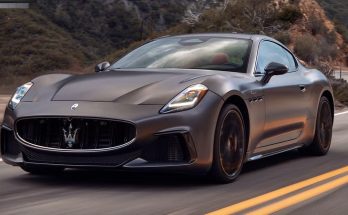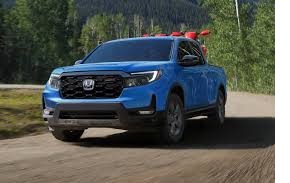DFCO, which stands for Deceleration Fuel Cut-Off, is a feature found in some modern vehicles that helps improve fuel efficiency and reduce emissions. It works by cutting off fuel supply to the engine during certain deceleration conditions, such as coasting or braking, when the engine speed is above a certain threshold. This allows the vehicle to rely on the momentum to propel forward, rather than consuming fuel unnecessarily.
How do I know if my car uses DFCO?
Determining whether your car uses DFCO can be a bit tricky as it depends on the make, model, and year of your vehicle. Here are a few ways to find out if your car has this feature:
- Check the owner’s manual: The first and easiest way to determine if your car uses DFCO is to consult the owner’s manual. The manual usually contains information about the features and functionalities of your vehicle, including any fuel-saving measures like DFCO. Look for keywords such as “fuel cut-off” or “deceleration fuel shut off” in the manual’s index or search for it using the digital copy if available.
- Research online: If you don’t have access to your owner’s manual or can’t find the necessary information, conducting an online search can be helpful. Manufacturer websites, automotive forums, or dedicated car enthusiast platforms often provide detailed information about specific models and their features. Look for discussions or specifications related to fuel-saving technologies in your car’s make and model.
- Notice changes in the behavior of your car while driving: While driving, pay attention to any changes in the behavior of your car when you release the accelerator pedal or apply the brakes. If the engine revs drop noticeably, especially when you’re not actively pressing the brake pedal, it might indicate that your car is utilizing DFCO. Additionally, if you experience a momentary hesitation or stuttering when transitioning from acceleration to deceleration, it could be a sign that the fuel supply is being cut off during these conditions.
- Consult a professional mechanic: If you’re still unsure whether your car uses DFCO, it’s always a good idea to consult a professional mechanic. They have the necessary knowledge and experience to identify and explain the features of your specific vehicle. They can also help diagnose any potential issues with the fuel delivery system or other related components.
If you discover that your car indeed uses DFCO, it’s worth noting that this feature can contribute to fuel savings, especially in stop-and-go city driving or during long descents. By utilizing DFCO, your vehicle can improve fuel efficiency and reduce the environmental impact during certain driving conditions.
However, even if your car doesn’t have the DFCO feature, there are still many other ways to improve fuel economy and reduce emissions. Maintaining proper tire pressure, performing regular vehicle maintenance, avoiding excessive idling, and practicing smooth and gradual acceleration and deceleration are some effective measures that can help you save fuel and reduce your carbon footprint.
Does engine braking still save fuel at right above idle?
Engine braking refers to using the engine’s compression to slow down a vehicle instead of relying solely on the brakes. This technique is often used in manual transmission vehicles where the driver downshifts to a lower gear to take advantage of the engine’s resistance to decelerate the vehicle.
In terms of fuel consumption, engine braking can potentially save fuel, but the extent of fuel savings depends on various factors, including engine efficiency, transmission type, driving speed, and road conditions. Engine braking at higher RPMs, especially in situations where the driver needs to slow down or stop quickly, can have a noticeable impact on fuel consumption.
However, when engine braking at idle or right above idle, the fuel savings are typically minimal. At these low RPMs, the engine is not consuming a significant amount of fuel, and the energy required to maintain the engine’s speed during engine braking is relatively low. Therefore, the fuel saved during engine braking at idle or near idle is generally negligible.
It’s important to note that while engine braking can be a useful technique in certain driving situations, such as when descending steep hills or when extra control is required, relying solely on engine braking as a fuel-saving strategy is not as effective as adopting other fuel-efficient driving habits such as smooth acceleration, maintaining a steady speed, and avoiding unnecessary idling.
While downhill, do cars consume more fuel while in neutral?
No, cars do not consume more fuel while in neutral while going downhill. In fact, when going downhill, most modern cars have a feature called “engine overrun” or “deceleration fuel cut-off” which shuts off fuel supply to the engine when the accelerator pedal is released. This means that the car’s engine is essentially running on momentum and gravity, and no fuel is being consumed. Furthermore, putting the car in neutral does not change the engine’s fuel consumption because the fuel supply is already cut off while going downhill. It is worth noting that putting the car in neutral while going downhill can be dangerous as it reduces the driver’s control of the vehicle and makes it harder to quickly respond to any unforeseen circumstances.
Why don’t all cars fully open the throttle valve under DFCO?
There are several reasons why not all cars fully open the throttle valve under deceleration fuel cut-off (DFCO):
- Safety: Fully opening the throttle valve can lead to a sudden loss of engine braking, which may compromise vehicle stability and control, especially in slippery conditions or during downhill descents. The partial closure of the throttle valve helps to maintain some level of engine braking, allowing the driver to have better control of the vehicle.
- Emissions control: Partially closing the throttle valve during DFCO helps reduce the amount of unburned fuel that can escape into the exhaust system. This helps to minimize emissions and meet the stringent emission standards set by regulatory authorities.
- Noise reduction: Fully opening the throttle valve during DFCO can produce a loud popping noise, known as “backfire,” which can be unsettling to drivers and passengers. By partially closing the throttle valve, the backpressure in the exhaust system is increased, reducing the likelihood of backfire and resulting in a quieter deceleration.
- Engine wear and tear: Fully opening the throttle valve under DFCO can cause rapid temperature changes in the engine’s combustion chambers, which may lead to thermal stress and potential damage to engine components. By partially closing the throttle valve, the temperature changes are more gradual, reducing the potential for engine wear and tear.
Overall, the partial closure of the throttle valve during DFCO helps to balance vehicle control, emissions control, noise reduction, and engine longevity. However, the specific behavior of the throttle valve during DFCO can vary between different car models and manufacturers, as they optimize the balance between these factors based on their design priorities.
Related Posts:
Did my serpentine aux belt shrink?
Are you able to fit a set of 4 wheels/tires in your car?
How do I know if my car uses DFCO? – Conclusion
In conclusion, determining if your car uses DFCO requires a combination of research, observation, and professional consultation. While the owner’s manual and online resources can provide initial information, noticing changes in your car’s behavior and seeking advice from a mechanic will provide a more accurate assessment. Remember that even without DFCO, adopting other fuel-saving habits can still make a significant difference in your car’s efficiency and the environment.



